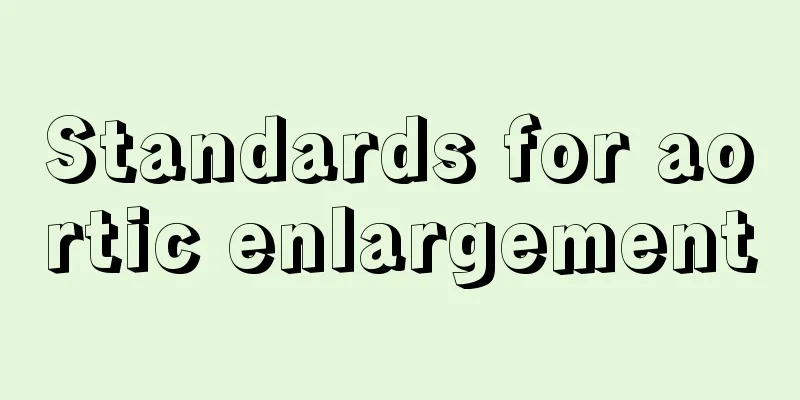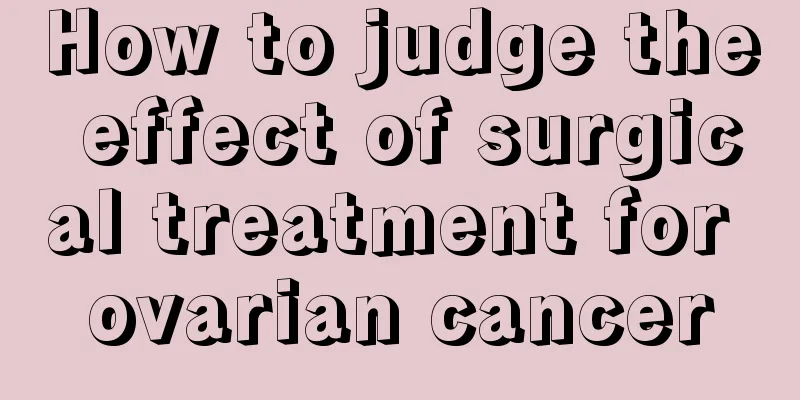Standards for aortic enlargement

|
Aortic enlargement is a manifestation of atherosclerosis and is a relatively common health problem. It can be said that atherosclerosis poses a relatively high risk to patients, so when this symptom is discovered, timely treatment is needed. Of course, atherosclerosis can be treated in many ways. Here are some treatments for atherosclerosis! 1. Comprehensive treatment (1) Eat a balanced diet with a low total calorie intake to prevent overweight. Significantly reduce the intake of saturated fat and sugar, limiting fat intake to less than 20g per day, of which saturated fat should be limited to less than 2g. Increase your soluble fiber intake. (2) Maintain moderate physical activity. Set the activity intensity according to your own situation, activity habits, and heart function, and proceed step by step. (3) Arrange work and life reasonably. (4) In other aspects, we recommend not smoking and avoiding secondhand smoke, but drinking a small amount of alcohol is allowed. (5) Control risk factors. If you have diabetes, you should control your blood sugar in time, including diet control. The glucose-lowering drugs for type 2 diabetes should not cause hyperinsulinemia, such as Diamecon; if there is hypertension, antihypertensive drugs should be given to lower the blood pressure to an appropriate level; if there is elevated blood cholesterol, high cholesterol should be controlled and appropriate lipid-lowering drugs should be given. 2. Drug treatment (1) Lipid-lowering drugs: ① Statins; ② Fibrates; ③ Niacin; ④ Cholestyramine; ⑤ Clofibrate; ⑥ Unsaturated fatty acids such as Yishouning, Xuezhiping and Xinmaile; ⑦ Sodium alginate diester. (2) Antiplatelet drugs: ① Aspirin; ② Dipyridamole; ③ Clopidogrel; ④ Cilostachys. (3) Vasodilators: ① Hydralazine (mainly acts on arteries); ② Nitroglycerin and isoflavone (mainly acts on veins); ③ Sodium nitroprusside (acts on arteries and veins); ④ α1 receptor blockers such as prazosin; ⑤ α2 receptor blockers such as phentolamine; ⑥ β2 receptor stimulants such as salbutamol; ⑦ Captopril and enalapril; ⑧ Nifedipine and diltiazem; ⑨ Salbutamol, valproate, prostaglandins, atrial natriuretic peptide, etc. (4) Thrombolytic and anticoagulant drugs 1) Thrombolytic drugs such as: ① urokinase and streptokinase; ② tissue-type plasminogen activator; ③ single-chain urokinase-type plasminogen activator; ④ TNK-tissue-type plasminogen activator. 2) Anticoagulant drugs such as: ① Heparin; ② Enoxaparin; ③ Nadroparin; ④ Bivalirudin. 3. Surgical treatment Surgical procedures such as recanalization, reconstruction or bypass transplantation of narrowed or occluded arteries can also be performed, as can interventional treatments such as placement of stents within the blood vessel lumen. |
<<: What does hepatic vein enlargement mean
>>: Are succulents suitable for bedrooms?
Recommend
What is the reason why hair doesn't grow long
Some people's hair does not grow, which is re...
What should be avoided in the diet for hamartoma
The causes of hamartoma are not only diverse but ...
What to do if the lid of the thermos cup cannot be opened
A thermos cup is actually a type of water cup, bu...
Acupuncture points for relieving itching
Skin itching is quite common in our daily life. F...
Four things to note when caring for prostate cancer: Proper care for prostate cancer promotes patient recovery
Prostate cancer is very painful for men. This dis...
What to do if nail polish becomes sticky
This is an era where everyone loves beauty. Becau...
How to wash liquid foundation off clothes
Liquid foundation is a kind of cosmetic, it is us...
What is hyperbaric oxygen therapy
Nowadays, there is a treatment in medicine called...
How to soak rice noodles to make them soft
During the processing and production process, ric...
How to deal with moldy shoes
When the weather is humid, we will easily find th...
What symptoms are associated with anal papilloma?
Anal papilloma is a common anorectal disease. Aff...
What's wrong with swollen calf muscles
Leg pain generally occurs among the elderly. Nowa...
What is sinusitis_How is sinusitis caused
Sinusitis is a common rhinitis disease. The cause...
Tongue allergy symptoms
Allergies are a very common phenomenon in daily l...
Men who eat more high-fat milk are more susceptible to prostate cancer. Men should eat less of these five "sex-defeating" foods.
Consequence of fatty meat: Makes men impotent Rea...









